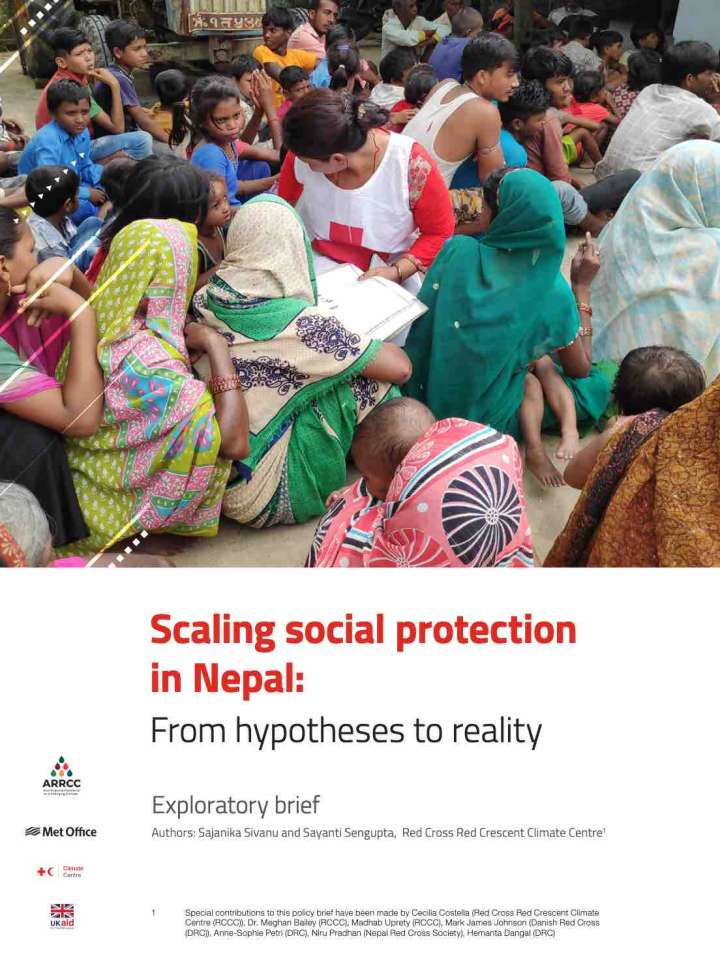Scaling social protection in Nepal: From hypotheses to reality
This brief explores the existing social protection (SP) system in Nepal and hypothesise how it could have been scaled up to address the impacts of the 2017 flood. In doing so, entry points to making the SP system more climate adaptive in Nepal will be identified and its potential use in future floods will be examined. In August 2017, Nepal experienced heavy and continuous rainfall that led to extensive flooding in 35 of the country’s 77 districts, with 18 severely affected (NPC, 2017). In addition to the human impacts, the housing, agriculture and livestock sectors all sustained damages.
Based on the findings of this study, it can be suggested that now is a conducive time to promote the relevance of flexible and scalable SP schemes. The use of vertical top-ups for flood response is becoming a popular instrument of response in Nepal, and future implementation of anticipatory cash transfers using SP is recommended. That is why the hypotheses in this brief conceptualize different recommendations for making the SP system in Nepal more adaptive, in the pursuit of reducing impacts of future floods.
Explore further
